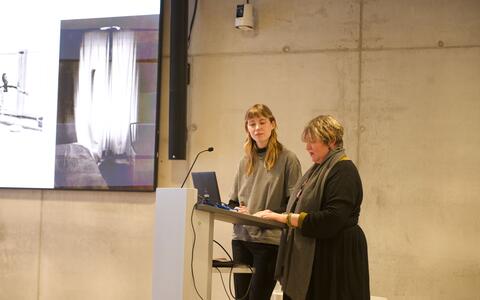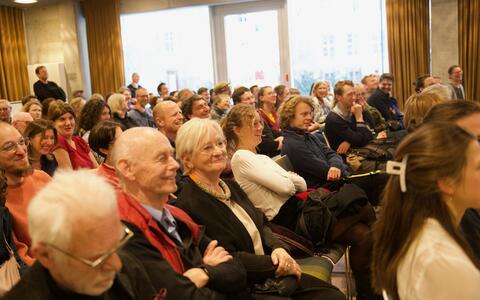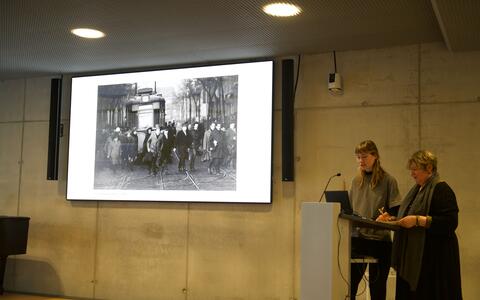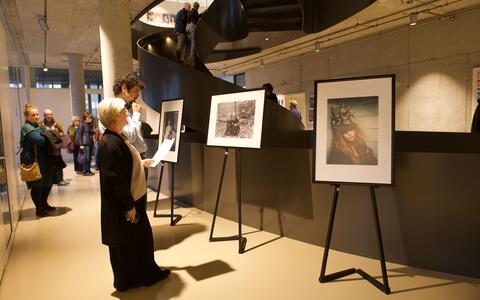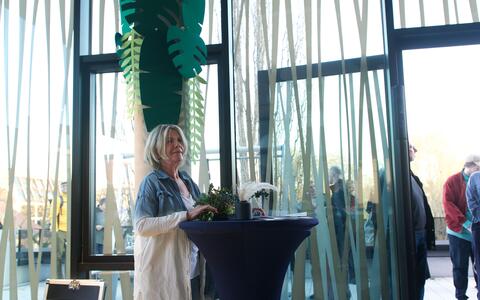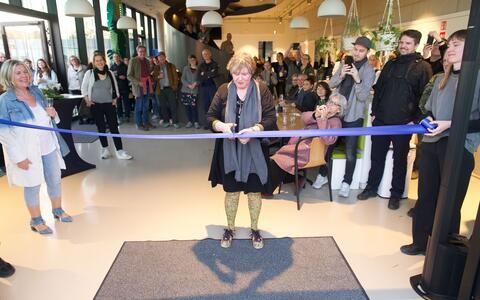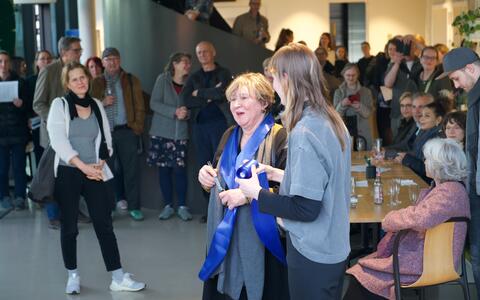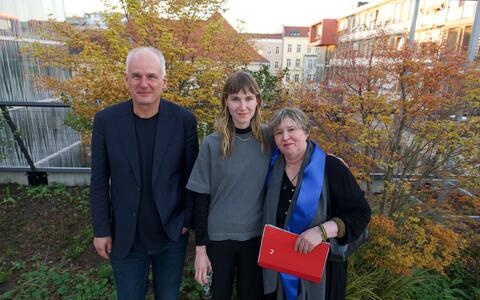Sibylle Bergemann photo exhibition
Sibylle Bergemann and her work remain inseparable from Berlin’s history. Her black-and-white photographs, which vividly document life in East Berlin before and after the fall of the Wall, made the photographer famous far beyond Germany’s borders.
Bergemann, who was born in 1941, lived and worked in central Berlin for over 40 years. From 1967 to 1976, she shared a small courtyard apartment on Hannoversche Strasse with her former mentor and later husband, Arno Fischer, and their daughter Frieda – just across from today’s Max Delbrück Center – Berlin Institute for Medical Systems Biology (MDC-BIMSB).
Since April 3, MDC-BIMSB has been displaying 40 of Bergemann’s works across three floors. Frieda von Wild, an artist herself and the custodian of her mother’s archive, curated the exhibition. “The apartment on Hannoversche Straße was always a very special home to me,” she said during the opening. “So much life happened in those one-and-a-half rooms – every night felt like a party.” That’s why she is especially pleased to present her mother’s photos, including scenes from Clärchens Ballhaus, so close to where her family’s lives once unfolded.
Bringing the weight of history into focus
“This exhibition offers deep insight into Sibylle Bergemann’s boundary-defying approach to photography, where documentation and art always went hand in hand,” said Professor Nikolaus Rajewsky, director of the MDC-BIMSB and organizer and host of the event, which was supported by the non-profit Friends of the Max Delbrück Center association. “Her work aligns with the spirit of our mission: to break boundaries – not just between scientific disciplines but also between science, art, and politics.”
Bergemann launched her career in the weekly newspaper Sonntag and the fashion magazine Sibylle— which shaped the lives of many women in the German Democratic Republic and was considered the “Vogue of the East.” Later, as a co-founder of the Ostkreuz photography agency, she worked for the German magazines Geo, Die Zeit, Stern, Der Spiegel, and the American New York Times Magazine. Her work took her to far-flung places around the globe.
Now, the MDC-BIMSB rooftop terrace – overlooking Bergemann’s former home – bears her name. “We wanted to honor someone who did a lot to foster communication between the East and West, and who had a significant influence on this neighborhood, which notably also housed the Federal Republic’s Permanent Mission during the GDR era,” Rajewsky said. “We also hope the exhibition revives the historical impact of the history that took place here.”
“We are deeply touched and feel very honored that the roof terrace – the most beautiful place in the MDC-BIMSB in our eyes – is named after my mother and Lily's grandmother,” said Frieda von Wild.
A hub for artists
Not far from the rooftop, at Schiffbauerdamm 12, Bergemann lived with her family from 1976 to 2004. Their home was a gathering place for East German artists and such internationally acclaimed photographers as Henri Cartier-Bresson.
That she was forced to leave the apartment because of the owner’s renovation plans hit Bergemann hard at the time. She died of cancer six years later in Gransee, Brandenburg, at the age of only 69. But her legacy lives on through her photographs – on view at the MDC-BIMSB until May 20th.
Text: Anke Brodmerkel
Photo exhibition from the archives of Sibylle Bergemann
Max Delbrück Center-Berlin Institute for Medical Systems Biology (MDC-BIMSB)
Hannoversche Str. 28, 10115 Berlin
Open to external visitors from Tuesday – Friday, 10 am - 3 pm
Contact
Jutta Kramm
Max Delbrück Center
Head of Communications
+49 30 9406 2140
jutta.kramm@mdc-berlin.de
- Max Delbrück Center
-
The Max Delbrück Center for Molecular Medicine in the Helmholtz Association aims to transform tomorrow’s medicine through our discoveries of today. At locations in Berlin-Buch, Berlin-Mitte, Heidelberg and Mannheim, our researchers harness interdisciplinary collaboration to decipher the complexities of disease at the systems level – from molecules and cells to organs and the entire organism. Through academic, clinical, and industry partnerships, as well as global networks, we strive to translate biological discoveries into applications that enable the early detection of deviations from health, personalize treatment, and ultimately prevent disease. First founded in 1992, the Max Delbrück Center today inspires and nurtures a diverse talent pool of 1,800 people from over 70 countries. We are 90 percent funded by the German federal government and 10 percent by the state of Berlin.



